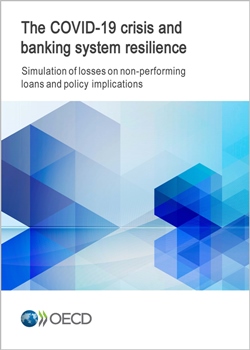Marchés financiers
The COVID-19 crisis and banking system resilience
|
Date of publication
|
Download the PDF
29/03/2021 - The COVID-19 pandemic has caused an unprecedented health and economic crisis and more than one year on both the outlook for the pandemic and the path to economic recovery remain highly uncertain. The economic consequences of COVID-19 have contributed to a sharp rise in defaults of corporate and household debt that is eroding the asset quality of banks across OECD countries. As the situation persists in 2021, banks could face a substantial increase in non-performing loans (NPLs) due to the rise in household and company defaults and will be forced to increase their loan loss provisions (LLPs) and allowances. Nevertheless, the continued deterioration in bank asset quality and earning performance could limit banks’ capacities to absorb higher loan losses over time, which could undermine their ability to intermediate credit and support an economic recovery.
This paper outlines the findings of a simulation analysis that assesses the extent of the potential rise in bank NPLs, taking into consideration assumptions under extensive monetary and fiscal support versus a scenario without continued support measures in keeping with conditions that prevailed in the 2008-2009 Global Financial Crisis. The paper also investigates the subsequent implications for bank capital and discusses whether policy responses may be needed to clean balance sheets.
See also COVID-19 Government Financing Support Programmes for Businesses, 2020 Global Financial Markets Policy Responses to COVID-19, 2020
|
Documents connexes
